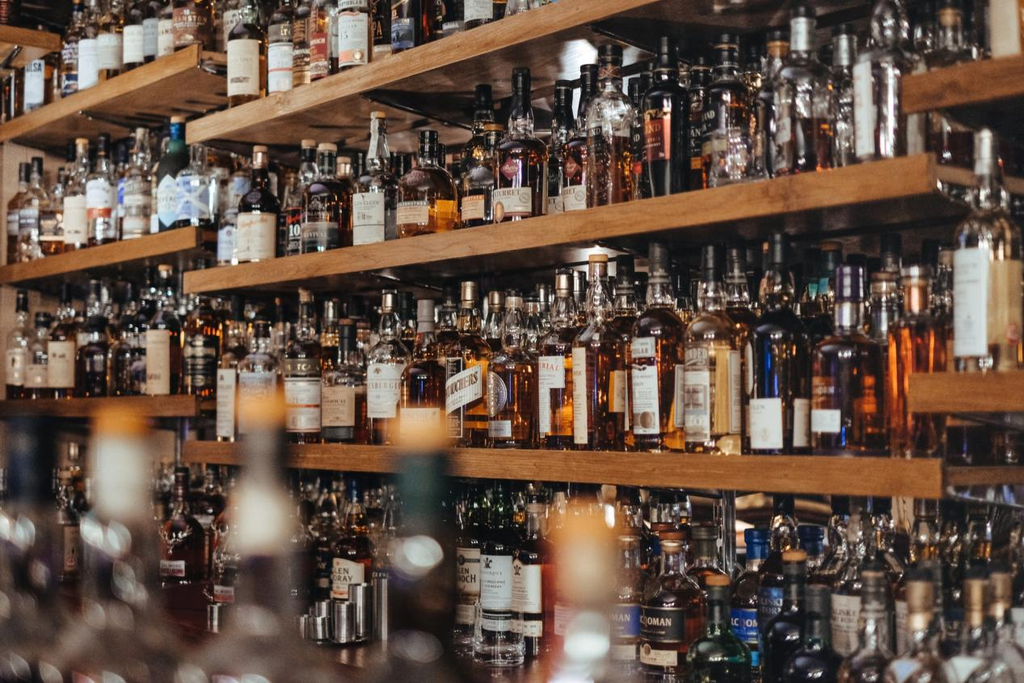Hypertension is an important risk factor for cardiovascular disease and has become a worldwide public health problem. Usually, the risk factors that are associated with hypertension include age, body mass index (BMI), smoking, and family history. In addition, drinking behavior, especially excessive or frequent drinking, is also a risk factor for hypertension. As a recognized "silent killer", the vast majority of hypertensive patients are asymptomatic. However, facial flushing after drinking alcohol is likely a sign of high blood pressure. Today, we will talk about the association between flushing face after drinking and high blood pressure.
Why drinking alcohol causes flushing face?
Alcohol flushing reaction, or alcohol flushing syndrome, is a physical response to alcohol consumption characterized by redness of the face and skin. It is the leading indicator of alcohol intolerance. After drinking alcohol, an enzyme called alcohol dehydrogenase (ADH) converts alcohol into acetaldehyde, a toxin that is a byproduct of alcohol metabolism. Another enzyme called acetaldehyde dehydrogenase (ALDH2) then metabolizes acetaldehyde into a less harmful substance called acetate [1]. If there is a problem with the activity of this enzyme, acetaldehyde cannot be metabolized in time and will be retained in the body, which may dilate the facial blood vessels and cause facial flushing. In severe cases, it may cause damages to multiple organs. The general lack of acetaldehyde dehydrogenase (ALDH2) in Asians results in the inability to degrade acetaldehyde at a normal rate and decompose alcohol. For this reason, the alcoholic flushing reaction is sometimes referred to as Asian flush syndrome, which occurs in approximately 36% of East Asian ethnic groups (Japanese, Chinese, and Koreans) after drinking alcohol[2].
People who blush after drinking alcohol have higher risk of hypertension
Recently, a study from Yonsei University in Seoul, South Korea found that the risk of high blood pressure soared after drinking alcohol. The study used data from the 2019 Korea Community Health Survey, which included 118,129 participants (51,047 men and 67,082 women). Participants were divided into five categories based on the change in facial flushing: non-drinking, nonflushing to non-flushing, flushing to flushing, non-flushing to flushing, flushing to non-flushing.

Figure 1 below shows the results of stratified analyses of the association of the changes in facial flushing on hypertension according to alcohol consumption. Taking the non-drinking group as the reference category, the OR of the NF was high in mild and moderate drinking levels among men (mild drinking: OR 1.95, CI 1.40–2.71; moderate drinking: OR 2.02 CI, 1.41–2.90). Also, the OR of the NF was high in moderate and heavy drinking levels among women (moderate drinking: OR 1.71, CI 1.16–2.52; heavy drinking: OR 1.90 CI, 1.19–3.04).
Figure 1 Stratified analysis of the changes in facial flushing with respect to hypertension by alcohol consumption
In general, the study found a significant association between changes in facial flushing in adults and high blood pressure, specifically:
- Compared with the other four groups, participants who did not have flushing face before drinking but now flush have a 42% increased risk of developing high blood pressure;
- In male group, even in light and moderate drinkers, as long as they did not have flushing face when they drank before, but now they have facial flushing, the risk of hypertension was significantly higher than that of non-drinkers, with an increase of 95% and 102% respectively;
- Among male participants who did not flush after drinking alcohol before but flush now, if they have diabetes or lack of exercises, their risks of hypertension will be higher with 124% and 68% increase respectively compared with those who’re non-drinkers;
- Among female subjects, moderate and heavy drinkers who did not flush before drinking but now flush had a 71% and 90% increased risk of hypertension, respectively.
Ways to delay facial flushing
Currently, there are some beverages or potions on the market that can help metabolize acetaldehyde, but it is impossible to replace acetaldehyde dehydrogenase (ALDH2). To prevent the alcohol flushing reaction, there are simple ways to change your drinking habits:
1. Eating a meal before drinking alcohol: It can slow the metabolism of alcohol in the body by reducing the accumulation of acetaldehyde and preventing the alcohol flushing reaction
2. Not drinking more than one alcoholic drink per hour and drinking slowly: This allows your body to flush out the acetaldehyde, especially if you guzzle water in between alcoholic beverages.

Dietary guidelines for alcohol
To reduce the risk of alcohol-related harms, the 2020-2025 Dietary Guidelines for Americans recommends that adults of legal drinking age can choose not to drink, or to drink in moderation by limiting intake to 2 drinks or less in a day for men or 1 drink or less in a day for women, on days when alcohol is consumed[4]. The Guidelines also do not recommend that individuals who do not drink alcohol start drinking for any reason and that if adults of legal drinking age choose to drink alcoholic beverages. Drinking less is better for health than drinking more.
List of reference:
【1】 Edenberg HJ, Mcclintick JN. Alcohol Dehydrogenases, Aldehyde Dehydrogenases, and Alcohol Use Disorders: A Critical Review. Alcohol Clin Exp Res. 2018;42(12):2281-2297. doi:10.1111/acer.13904
【2】 Cho Y, Kwak S, Lewis SJ, et al. Exploring the utility of alcohol flushing as an instrumental variable for alcohol intake in Koreans. Sci Rep. 2018;8(1):458. doi:10.1038/s41598-017-18856-z
【3】 Park YS, Kang SH, Park EC, Jang SY. Association between changes in facial flushing and hypertension across drinking behavior patterns in South Korean adults. J Clin Hypertens (Greenwich). 2022 May;24(5):611-620. doi: 10.1111/jch.14475. Epub 2022 Apr 19. PMID: 35437944; PMCID: PMC9106078.
【4】U.S. Department of Agriculture and U.S. Department of Health and Human Services. 2020 – 2025 Dietary Guidelines for Americanspdf iconexternal icon. 9th Edition, Washington, DC; 2020.



Leave a comment
This site is protected by hCaptcha and the hCaptcha Privacy Policy and Terms of Service apply.